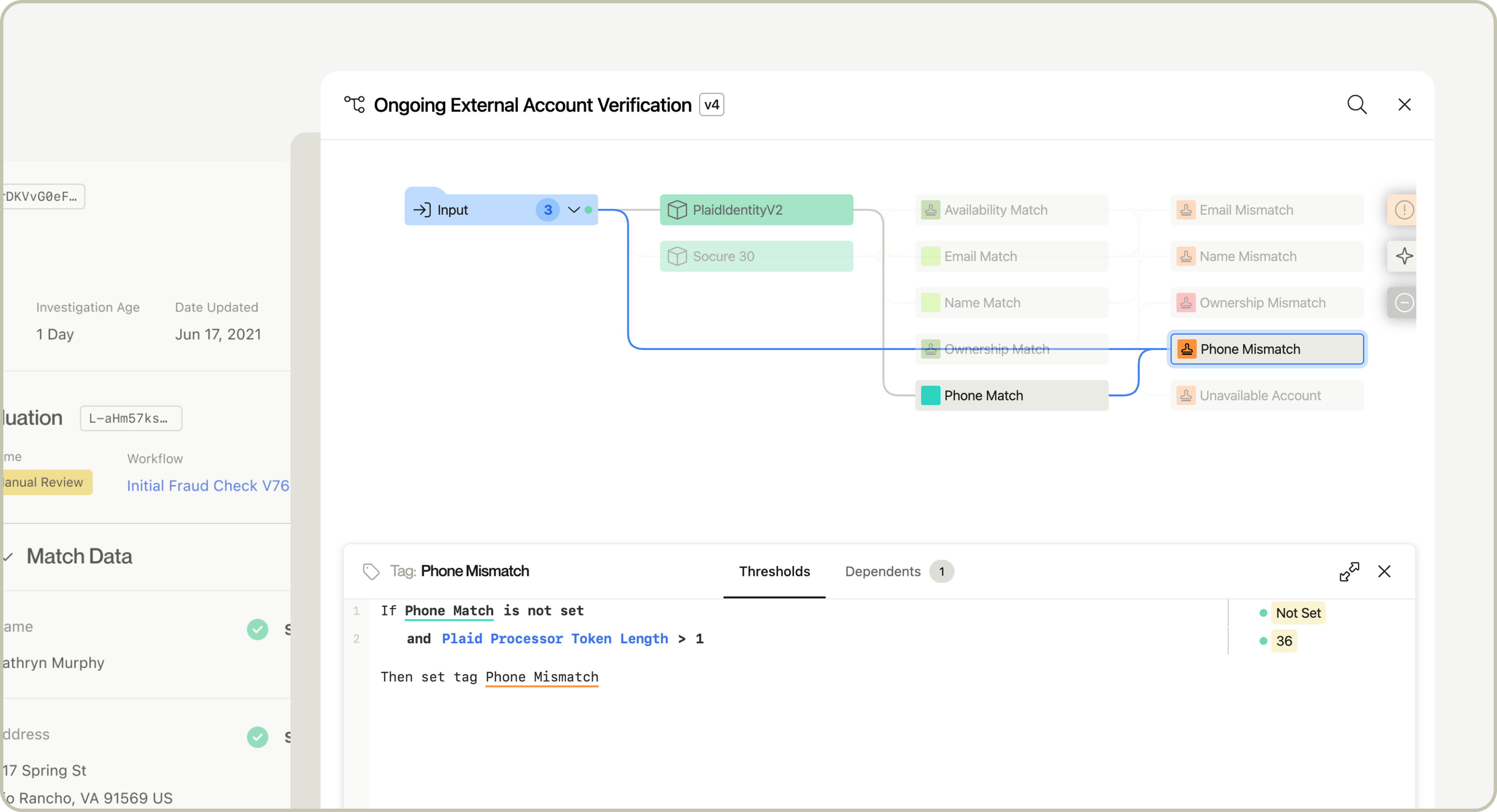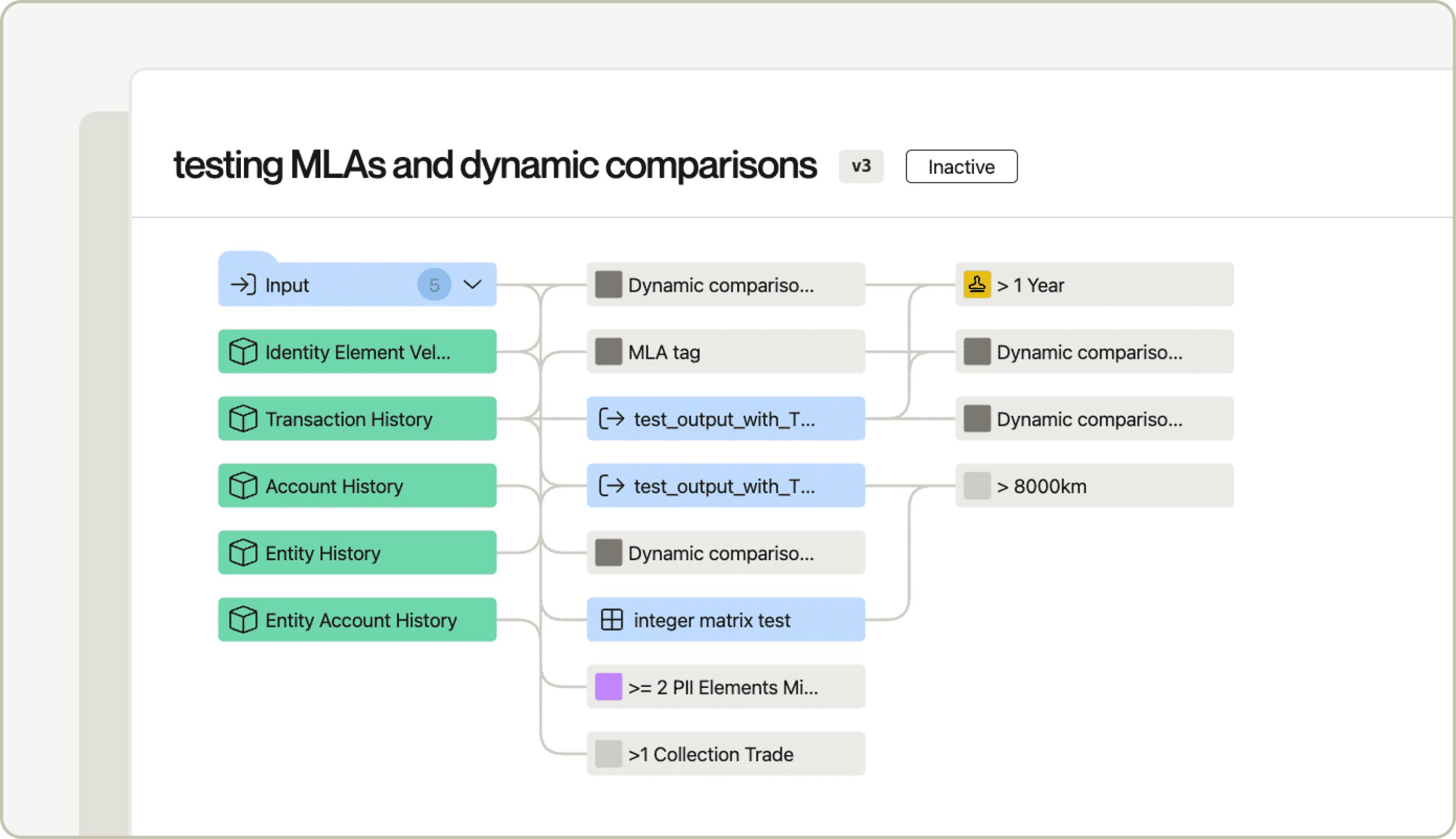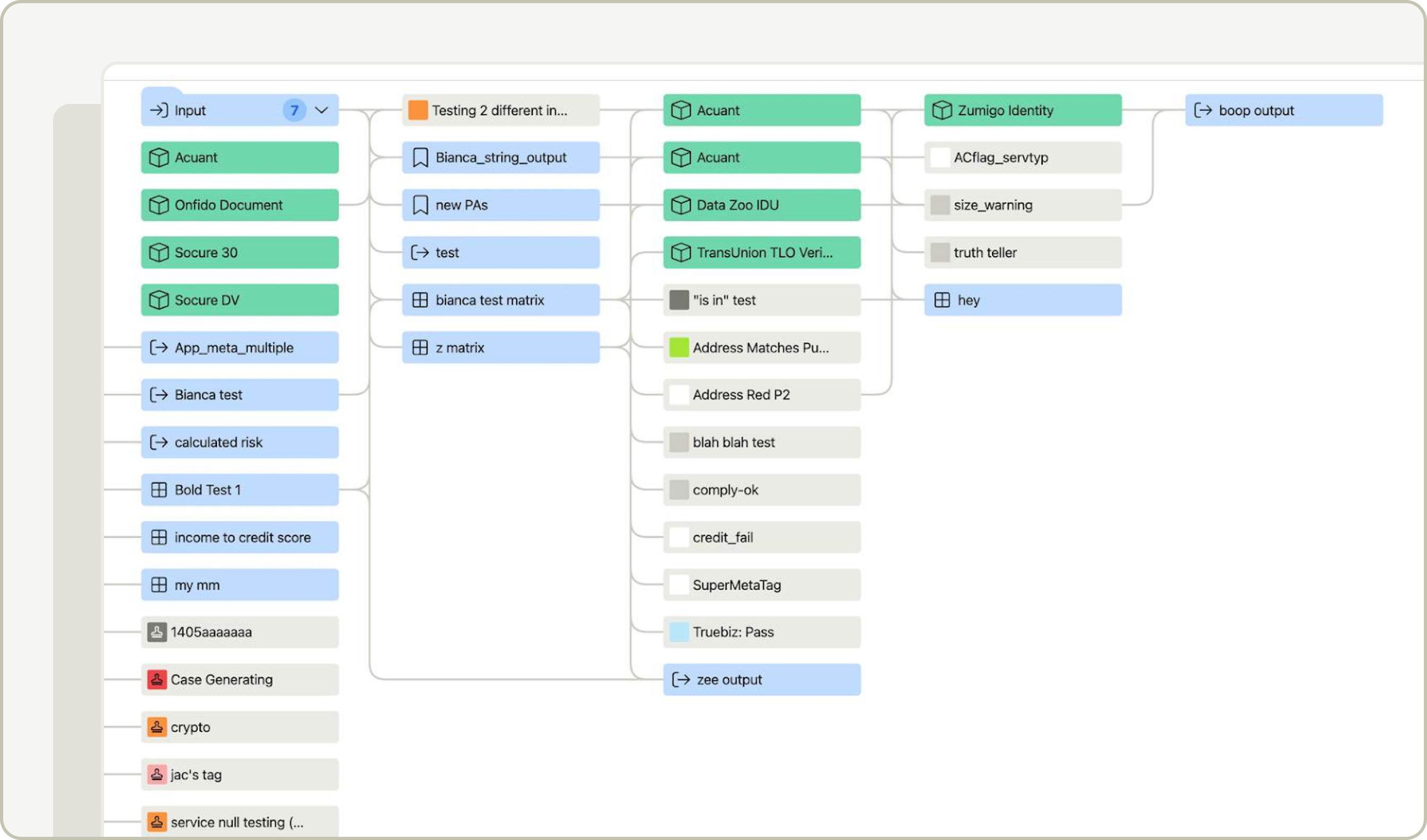Rule Explainability navigator

View more context on an Evaluation in a new expansion on Rule Explainability with the Workflow Navigator. Users now have the ability to navigate the Workflow in a read-only view and see the Tags, Outcomes, and Rules that have been set for the Evaluation. Through the Navigator, users see context on Services, Inputs, Outputs, Published Attributes, and Matrix Models to help them better understand the Evaluation Rules and Outcomes.
With this release, users are able to:
- Understand the dependencies between Tags, Services, Published Attributes, and other configuration components for a given Evaluation
- View the Workflow outputs that have been set or not set based on the logic
- More effectively troubleshoot an Evaluation by traversing the Workflow and identifying the thresholds that were triggered
- Gain insights into areas of their policies that could be optimized or improved with additional Tags or logic




